#Zomato Data Scraping
Explore tagged Tumblr posts
Text
Why Should You Utilize Zomato Food Delivery Data Scraping & Restaurant?
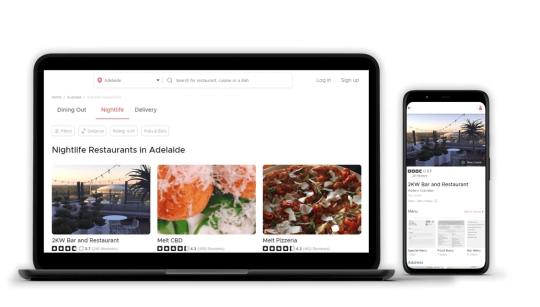
In the digital age, data holds the key to unlocking a world of possibilities, especially in the realm of food delivery. With platforms like Zomato offering a plethora of restaurant options, harnessing data scraping techniques from these platforms can revolutionize the way users interact with food services.
Understanding Data Scraping
Data scraping involves extracting information from websites, such as Zomato, by employing automated tools or bots to gather data in a structured format. For food delivery platforms like Zomato, this could include restaurant details, menu items, prices, reviews, and more.
Ethical Considerations
While data scraping can offer immense benefits, ethical considerations are paramount. It's crucial to respect the terms of service of platforms like Zomato and ensure that scraping activities comply with legal regulations and ethical standards. Obtaining explicit permission or using publicly available data is essential to avoid infringing on privacy or violating policies.
Practical Applications
Integrating Web Scraping Zomato Delivery Data to various applications can significantly enhance user experiences:
Personalized Recommendations: By analyzing scraped data, algorithms can suggest personalized restaurant recommendations based on user preferences, previous orders, and location, making the dining experience more tailored and enjoyable.
Menu Aggregation and Comparison: Aggregating menus from different restaurants allows users to compare prices, dietary options, and specialties, simplifying decision-making and enabling informed choices.
Improved Delivery Services: Accessing real-time data on restaurant operating hours, delivery times, and menu updates ensures accurate and timely information for delivery services, reducing errors and enhancing customer satisfaction.
Analyzing Trends: Scraped data can be used to identify culinary trends, popular dishes, and customer preferences, assisting restaurants in optimizing their menus and services to meet consumer demands.
Implementing Zomato Data Scraping
Developers can utilize web scraping tools and APIs to gather data from Zomato restaurant data in a structured format. Python-based libraries like BeautifulSoup and Scrapy can facilitate the scraping process by extracting relevant information from web pages.
Restaurant Menu Integration
Integrating scraped restaurant menus into third-party applications or websites requires careful structuring and categorization of the data. The menus need to be organized logically, ensuring easy navigation and readability for users.
Challenges and Solutions
Despite its potential, data scraping presents challenges such as changing website structures, rate limitations, and potential legal issues. Employing robust scraping algorithms, monitoring website changes, and ensuring compliance with platform policies can mitigate these challenges.
Conclusion
The utilization of food data scraping and restaurant menu integration offers boundless opportunities for enhancing user experiences, streamlining services, and facilitating informed decision-making. However, it's crucial to conduct these activities ethically, respecting the terms of service and privacy considerations.
As technology evolves, the integration of scraped data into innovative solutions will continue to redefine the food delivery landscape, providing
#grocerydatascraping#restaurant data scraping#food data scraping services#zomato api#restaurantdataextraction#grocerydatascrapingapi#fooddatascrapingservices#web scraping services#food data scraping#Zomato Web Scraping#Zomato restaurant data#Zomato restaurant data scraping#Zomato restaurant data scraping company#Zomato data scraping
0 notes
Text
Zomato Food Delivery Data Scraping | Scrape Zomato Food Delivery Data

Use Zomato Restaurant Food Delivery data scraping services to extract or scrape Zomato restaurant data by scraping food delivery data, including menus, locations, mentions, reviews, etc
#Scrape Zomato Restaurant Data#web scraping zomato#zomato data scraping#Scrape Zomato Food Delivery Data
0 notes
Text
Scrape Zomato Data to Create a Competitive-Edge in the Market
Scraping Zomato data can be a game-changer in today’s competitive world. By using our cutting-edge scraping techniques, businesses can extract valuable insights from customer feedback and gain a competitive-edge in the market. From understanding customer preferences to enhancing services, scraping Zomato data offers a wealth of data-driven advantages. Try our Zomato review data scraping service to boost your business growth and elevate new strategies.
2 notes
·
View notes
Text
Easily extract online food delivery data using the powerful Zomato API. Gain valuable insights, optimize operations, and make data-driven decisions for your business success.
For More Information:-
0 notes
Text
1 note
·
View note
Text
How to Use Zomato API to Scrape Restaurant Data – A Detailed Guide

Introduction
In the dynamic world of digital gastronomy, where culinary delights and dining experiences are increasingly explored and celebrated online, the demand for up-to-date restaurant data is insatiable. As food enthusiasts and businesses seek the latest insights into menus, reviews, and more, the Zomato API emerges as a powerful tool for scraping this invaluable information.
Our comprehensive guide delves into the intricate art of utilizing the Zomato API to scrape restaurant data. Whether you're a restaurateur striving to understand your competitors, a food blogger searching for fresh content, or a data enthusiast eager to explore culinary trends, this guide will serve as your compass in the world of data extraction.
We will navigate through the intricacies of Zomato Scraper, uncovering its capabilities to provide you with rich, real-time restaurant data. From scraping restaurant details to accessing customer reviews, our detailed guide ensures that you harness the full potential of this resource.
Prepare to embark on a data-driven culinary journey, where you'll unlock a wealth of insights, enabling you to make informed decisions, craft engaging content, and explore the ever-evolving realm of restaurant experiences. Welcome to a world where the digital table is set, and the Zomato API is your key to an exquisite menu of data-driven possibilities.
Zomato: Transforming the Restaurant Business
In the bustling realm of the restaurant business, where culinary arts meet customer preferences, Zomato has emerged as a transformative force. With its roots in India, Zomato has rapidly evolved into a global restaurant discovery and food delivery platform, redefining how we explore, experience, and engage with dining establishments.
Zomato's journey began as a humble restaurant review website, helping diners discover new places to eat, explore menus, and share their dining experiences. Over time, it expanded its horizons to offer a comprehensive ecosystem for diners and restaurateurs.
Zomato is a one-stop destination for diners to explore an extensive database of restaurants, read authentic reviews, view ratings, and even reserve tables. Its user-friendly interface and intuitive features make finding the perfect dining spot for any occasion more accessible.
However, Zomato's impact transcends the diner's experience alone. It has revolutionized the restaurant business by empowering restaurateurs with valuable insights and tools. Through its services, restaurants can establish a digital presence, organize their online reputation, and reach a broader audience. Zomato has become a trusted partner for restaurant owners looking to boost their visibility and attract new customers.
One of Zomato's standout features is its data-driven approach. It collects vast data on restaurant menus, pricing, user reviews, and more. This data is a goldmine for restaurateurs, helping them make informed decisions about their offerings and pricing strategies. It also facilitates data-driven marketing and personalized customer engagement.
Moreover, Zomato's foray into food delivery services has further revolutionized the industry. With the convenience of ordering food from your favorite restaurant and delivering it to your doorstep, Zomato has disrupted the traditional dining experience. Its efficient delivery network has made it a go-to platform for foodies craving restaurant-quality meals from the comfort of their homes.
In a fast-changing and very competitive industry, Zomato continues to innovate, adapting to the evolving needs and preferences of diners and restaurant owners. It has not only transformed the way we discover and enjoy food but has also empowered restaurants to thrive in the digital age. As Zomato continues to expand its global footprint, it remains a dynamic and influential player in the restaurant business, shaping the future of dining experiences.
What Data Can You Get from Zomato?
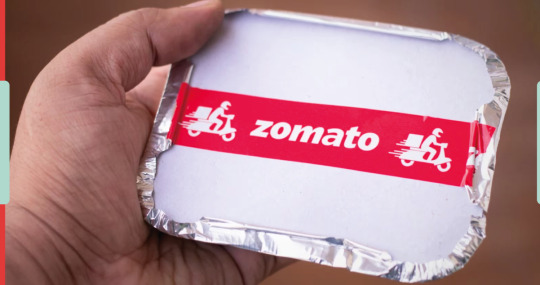
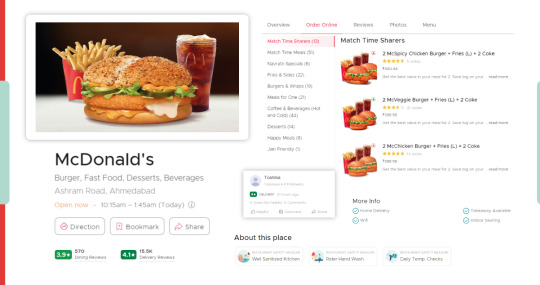
Restaurant Information
Restaurant Name
Address
Phone Number
Operational Hours
Cuisine Type
Location (Latitude and Longitude)
Menu Data
Menu Items
Dish Names
Descriptions
Prices
User Reviews and Ratings
User Reviews
User Ratings
Comments
User Profile Information
Photos
Restaurant Images
Food Images
User-Uploaded Photos
Table Reservations
Availability
Reservation Options
Booking Confirmation
Restaurant Features
Amenities (e.g., Wi-Fi, Parking)
Accepted Payment Methods
Delivery and Takeout Information
Delivery Availability
Delivery Areas
Delivery Times
Minimum Order Amount
Restaurant Attributes
Zomato Rating
Cost for Two
Zomato Gold and Zomato Pro Availability
Location Data
Geographical Coordinates
Nearby Restaurants
User Profile Data (if registered)
Name
Profile Picture
Review History
Event Information (if applicable)
Upcoming Events
Event Details
Statistics and Analytics
Insights on User Activity
Trend Analysis
Popular Dishes
Dish Names
Ratings
User Reviews
It's important to note that the availability of these data fields may vary depending on the specific API endpoints and services you are using within Zomato. Additionally, Zomato may periodically update and expand the data fields to enhance the user and developer experience. When working with Zomato's data, be sure to refer to their official documentation for the most up-to-date information on available data fields and their usage.
Unlock the Restaurant Insights Using Zomato API
To use the Zomato API to obtain restaurant data, follow these steps:
Register for an API Key

Visit the Zomato API Developer Portal (https://developers.zomato.com/api).
Sign up or log in to your Zomato account.
Create a new application to obtain your API key. Make note of your API key; you'll need it for authentication.
Understand Zomato's API Endpoints
Familiarize yourself with the different API endpoints and their functions. Zomato provides various endpoints to access different types of data, such as restaurant details, reviews, menus, and more.
Make API Requests
Choose the specific API endpoint that corresponds to the type of restaurant data you want to access.
Construct a request URL with the necessary parameters. Zomato's API endpoints accept parameters like location, cuisine, and establishment type to filter the results
Add Your API Key
Include your API key in the request headers or as a query parameter. This key is essential for authentication and access to Zomato's data.
Send the API Request
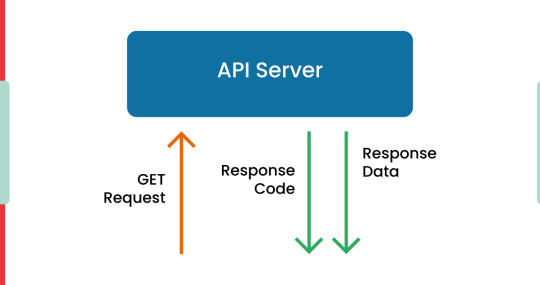
Use your preferred programming language or API client to send the HTTP request to the Zomato API endpoint.
Handle the API Response
Receive the JSON response from the API.
Parse the JSON data to extract the restaurant information you require. The data structure may vary based on the specific API endpoint.
Display or Use the Data
Utilize the obtained data according to your application's needs. You can display restaurant details, ratings, reviews, menus, and more.
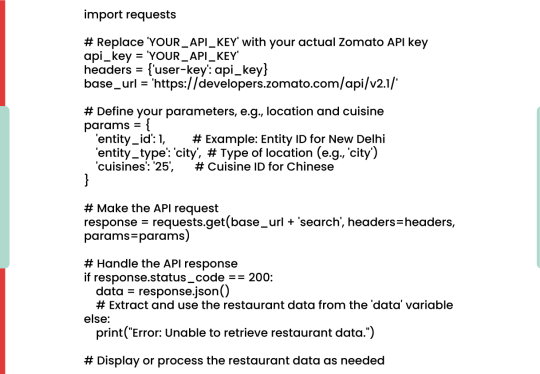
Please note that Zomato's API offers various endpoints for different purposes, so you can tailor your requests to obtain specific types of restaurant data. Make sure to read Zomato's API documentation for comprehensive details on available endpoints, parameters, and data formats.
The Different Types of Zomato APIs: A Comprehensive Overview
Zomato, a leading name in the world of restaurant discovery and food-related services, offers a range of APIs (Application Programming Interfaces) that cater to the diverse needs of developers, businesses, and food enthusiasts. These APIs provide access to a wealth of restaurant-related data, allowing developers to create innovative applications and solutions. In this detailed exploration, we'll delve into the various types of Zomato APIs and their specific use cases.
1. Zomato Search API
The Zomato Search API is a fundamental tool for discovering restaurants based on specific parameters. Developers can search for restaurants using various filters such as location, cuisine, establishment type, and user reviews. It's the go-to choice for applications that need to provide users with a curated list of dining options.
2. Zomato Restaurant API
The Restaurant API, as the name suggests, provides detailed information about a specific restaurant. Developers can access comprehensive data, including the restaurant's name, location, operational hours, user reviews, photos, and more. This API is ideal for applications that require in-depth knowledge about individual dining establishments.
3. Zomato Cuisine API
The Cuisine API focuses on one of the key aspects of dining - the type of cuisine. It allows developers to explore a wide range of cuisines and their availability in a given location. This API is beneficial for applications that want to offer users the opportunity to explore specific culinary experiences.
4. Zomato Category API
Categories play a crucial role in restaurant classification. The Category API provides information about different types of restaurants, helping users find the dining experience they desire. This API is essential for applications that aim to categorize and filter restaurants effectively.
5. Zomato Collection API
Collections often reflect popular themes or dining trends in a particular location. The Collection API enables developers to access curated lists of restaurants that fall under specific themes or categories. Applications that aim to showcase trending or unique dining experiences can benefit from this API.
6. Zomato Reviews API
User reviews are a significant part of the dining decision-making process. The Reviews API offers access to user-generated reviews, ratings, and comments about restaurants. This API is essential for applications that want to include authentic user feedback.
7. Zomato Location API
The Location API assists in retrieving information about different locations. Developers can access details such as the names of cities, localities, and establishment types. This API is beneficial for applications that require location-based services and recommendations.
8. Zomato Geocode API
Geocoding is crucial for accurately locating restaurants. The Geocode API converts an address into geographical coordinates (latitude and longitude), helping applications pinpoint the exact restaurant locations. This API is indispensable for mapping and navigation applications.
9. Zomato Delivery API
With the rise of food delivery services, the Delivery API has become vital. It offers information about food delivery options, minimum order amounts, and delivery times. Applications that focus on food delivery can use this API to provide valuable delivery-related details.
10. Zomato Dailies API
Dailies, or daily deals, are a popular aspect of dining out. The Dailies API provides information about daily specials, offers, and promotions at restaurants. Applications looking to showcase daily deals and discounts can integrate this API to provide real-time information to users.
11. Zomato User API
User profiles play a significant role in platforms that encourage user interactions. The User API enables developers to access user-specific data, including user profiles and activity. This API is essential for applications that aim to create a sense of community and engagement.
12. Zomato Collections API
Collections, as curated lists of restaurants, are a popular feature on the Zomato platform. The Collections API allows developers to retrieve information about these lists, making it possible for applications to feature curated dining options.
13. Zomato Table Booking API
Table reservations are a significant part of the restaurant experience. The Table Booking API allows developers to offer table reservation services to users, enhancing their dining experience through seamless reservations
14. Zomato Restaurant Widget API
The Restaurant Widget API provides developers with a widget that can be embedded into their websites. It allows for the integration of restaurant listings, reviews, and ratings, offering valuable content to users.
15. Zomato Gold API
Zomato Gold is a premium membership program offering discounts and benefits at partner restaurants. The Zomato Gold API provides access to information about Gold partner restaurants and their offers. It's essential for applications looking to incorporate Zomato Gold benefits into their services.
16. Zomato Pro API
Zomato Pro is another membership program that offers complimentary food delivery and dining experiences. The Zomato Pro API provides data related to partner restaurants and Pro-exclusive offers. Applications can use this API to enhance user experiences with Pro benefits.
17. Zomato Geospatial Search API
The Geospatial Search API combines location and cuisine searches, enabling developers to find restaurants within a specific area that offer particular cuisines. It's useful for applications focused on localized dining recommendations.
18. Zomato Lite API
Zomato Lite is designed for applications with limited resources or bandwidth. This lightweight version of the API offers essential functionality for restaurant discovery and access to basic data fields.
19. Zomato Developers API
The Developers API is the entry point for developers looking to explore and experiment with Zomato's API offerings. It provides access to basic data and functionality for development and testing.
Each of these Zomato APIs offers unique capabilities and data access, allowing developers to create a wide range of applications and services tailored to the needs of users, restaurateurs, and food enthusiasts. The choice of API depends on the specific requirements of your project, whether it's restaurant discovery, menu exploration, user engagement, or more. By leveraging the diverse capabilities of Zomato's APIs, developers can craft innovative solutions that enhance the dining experience and empower businesses in the culinary industry.
Conclusion
In this detailed guide, we've navigated the intricate world of the Zomato API and how to effectively harness it for scraping restaurant data. From searching for your favorite dining spots to obtaining in-depth restaurant details, Zomato's APIs empower developers and businesses to elevate the dining experience for users.
By understanding the various types of Zomato APIs, you can craft applications and services that cater to the diverse needs of food enthusiasts, restaurateurs, and culinary explorers. Whether you're building a restaurant discovery app, a food delivery platform, or a user engagement tool, Zomato's APIs provide the essential ingredients to create exceptional dining experiences.
Ready to embark on your culinary data journey? Start exploring the world of restaurants, menus, reviews, and more with the Zomato API, and unlock the potential for innovative and data-driven dining solutions. Begin your Zomato API journey today and savor the possibilities!
Know More: https://www.realdataapi.com/scrape-restaurant-data-using-zomato-api.php
#Zomato API to Scrape#Zomato Restaurant API#Scraping restaurant data#Zomato Collections API#Extract Zomato Data API
0 notes
Text
Unlocking Business Insights: Zomato App Data Scraping Made Easy
Mobile App Scraping offers cutting-edge Zomato Food delivery mobile app data scraping Services in key markets including the USA, UAE, UK, and Canada, encompassing essential information such as prices, images, reviews, ratings, and more.
know more:
0 notes
Text
Web Scraping Zomato Delivery Data - The Ultimate Guide
Our custom and pre-built scrapers help you scrape Zomato delivery data from well-known websites quickly and affordably. For more information, contact Actowiz Solutions now!
#Web Scraping Zomato Delivery Data#Extract Zomato Delivery Data#Scrape Zomato Delivery Data#Zomato Delivery Data Scraping
0 notes
Text
Web Scraping Zomato Delivery Data - The Ultimate Guide
Our custom and pre-built scrapers help you scrape Zomato delivery data from well-known websites quickly and affordably. For more information, contact Actowiz Solutions now!
Know more: https://www.actowizsolutions.com/web-scraping-zomato-delivery-data-the-ultimate-guide.php'
#WebScrapingZomatoDeliveryData#Zomato Delivery Data Scraping#ExtractZomatoDeliveryData#ScrapeZomatoDeliveryData
0 notes
Text
How to Scrape Restaurant Data from Zomato

In the digital age, data is a valuable asset, especially when it comes to businesses such as restaurants and pubs. However, understanding the significance of data for marketing, research, and analysis, many companies are eager to build comprehensive databases that encompass essential details about various establishments. One popular source for this information is Zomato, a prominent online platform that provides users with many information about restaurants, pubs, and other eateries. In this article, we will explore how to scrape restaurant data from Zomato to create a database of these establishments in India's eight major metro cities.
About Web Scraping
Web scraping is an automated process of gathering data from websites. It entails developing code that systematically navigates through web pages, locates pertinent information, and organizes it into a structured format, such as a CSV or Excel file. Nevertheless, it is of utmost importance to acquaint ourselves with the terms of service of the target website before commencing web scraping. This precautionary step ensures that the web scraping restaurants data procedure adheres to all rules and policies, preventing potential violations.
About Zomato
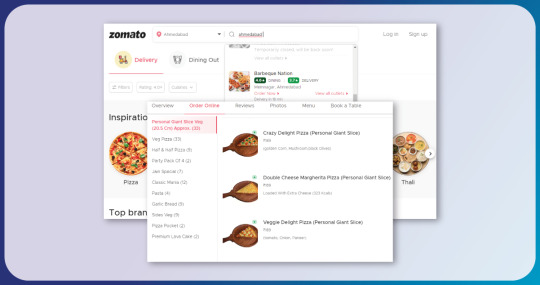
Zomato is a leading online platform that provides a comprehensive guide for users seeking information about restaurants, cafes, bars, and other eateries. It offers a wide range of details that can assist users in making informed decisions when dining out or ordering food. The platform goes beyond merely providing basic restaurant listings and delves into more intricate aspects that enrich the dining experience. One of the primary features of Zomato is its extensive database of restaurants, which spans various cities and countries. Users can access this information to explore their diverse culinary options. Each restaurant listing typically includes essential data, such as the establishment's name, location, cuisine type, and opening hours. Scrape Zomato food delivery data to gain insights into customer ordering behavior.
List of Data Fields

Restaurant Name
Address
City
State
Pin Code
Phone Numbers
Email
Web Scraping Using Python and BeautifulSoup
We have chosen Python, a highly versatile and popular programming language, for our web scraping restaurant data from Zomato project. To extract the required data from Zomato's web pages, we will leverage the power of the "Beautiful Soup" library. This Python library is specifically designed to parse HTML content efficiently, enabling us to extract relevant information seamlessly. With the combined strength of Python and Beautiful Soup, we can efficiently and precisely automate gathering the necessary data from Zomato's website.
Step-by-Step Guide to Scraping Restaurant Data from Zomato
1. Import Necessary Libraries:
When you Scrape Restaurants & Bars Data, make sure you have the required Python libraries installed. Install "requests" and "Beautiful Soup" libraries if not already in your Python environment.
2. Identify Target URLs:
Determine the URLs of Zomato's web pages containing the restaurant data for each of India's eight major metro cities. These URLs will serve as the starting points for our web scraping.
3. Send HTTP Requests:
Use the "requests" library to send HTTP requests to each identified URL. It will fetch the HTML content of the web pages, allowing us to extract relevant data.
4. Parse HTML Content:
Utilize "Beautiful Soup" to parse the HTML content retrieved from the web pages. The library will help us navigate the HTML structure and locate specific elements that contain the desired information, such as restaurant names, addresses, contact details, etc.
5. Extract Data and Store:
Once we have successfully located the relevant elements in the HTML, extract the required data seeking help from Food Delivery And Menu Data Scraping Services. Gather details such as restaurant names, addresses, city, state, PIN codes, phone numbers, and email addresses. Store this information in a structured format, such as a CSV file, database.
6. Data Cleaning and Validation:
After extracting the data, performing data cleaning and validation is crucial. This step involves checking for duplicate entries, handling missing or erroneous data, and ensuring data consistency. Cleaning and validating the data will result in a more accurate and reliable database.
7. Ensure Ethical Web Scraping:
It is essential to adhere to ethical practices throughout the web scraping process. Respect the terms of service of Zomato and any other website you scrape. Avoid overloading the servers with excessive requests, as this could cause disruptions to the website's regular operation.
8. Update the Database Regularly:
To keep the database current and relevant, consider setting up periodic updates. Restaurant information, such as contact details and operating hours, can change over time. Regularly scraping and updating the database will ensure users can access the most up-to-date information.
Important Considerations:
Respect Robots.txt: Before scraping any website, including Zomato, check the "robots.txt" file hosted on the site to see if it allows web scraping and if there are any specific rules or restrictions you need to follow.
Rate Limiting: Implement rate limiting to avoid overloading the Zomato server with too many requests in a short period.
Update Frequency: Regularly update your database to ensure the information remains relevant and up-to-date.
Conclusion: Building a database of restaurants and pubs in India's major metro cities from Zomato using Zomato scraper is an exciting project that requires web scraping skills and a good understanding of data management. By following ethical practices and respecting website policies, you can create a valuable resource that is helpful for marketing research, analytics, and business growth in the hospitality sector. Remember to keep the data accurate and updated to maximize its utility. Happy scraping!
know more:
#scrape restaurant data from Zomato#web scraping restaurants data#Food Delivery And Menu Data Scraping Services#Zomato scraper#Scrape Zomato food delivery data
0 notes
Text
Exploring Zomato API: Unleashing Food Delivery Platform's Power
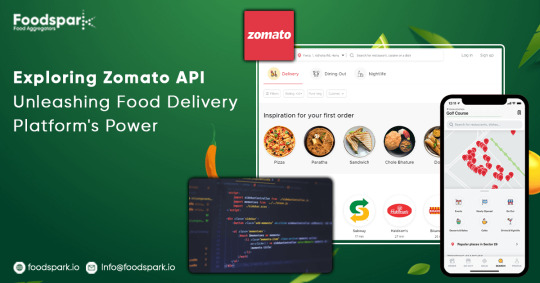
Understanding Restaurant Data
Restaurant data is a valuable resource for businesses and individuals alike. With the help of Zomato API, it is now possible to extract and analyze restaurant data in a more efficient and effective way. Here are some key insights into how restaurant data can be used to make informed decisions.
Restaurant Information
Zomato API provides access to a wealth of information about restaurants, including their location, cuisine, ratings, reviews, and menus. This data can be used to create comprehensive databases of restaurants, which can be used for a variety of purposes such as marketing, research, and analysis.
Competitive Analysis
By analyzing restaurant data, businesses can gain insights into their competitors' strengths and weaknesses. This can help them identify areas where they can improve their own offerings, such as menu items, pricing, and service quality. With Zomato API, it is possible to compare restaurants based on a wide range of factors, including location, cuisine, and ratings.
Market Research
Restaurant data can also be used for market research, allowing businesses to identify trends and opportunities in the industry. For example, by analyzing the popularity of different types of cuisine in a particular area, businesses can identify opportunities to introduce new menu items or expand their offerings.
Personalization
Finally, restaurant data can be used to personalize the dining experience for customers. By analyzing their preferences and behavior, businesses can tailor their offerings to meet their needs and preferences. For example, by analyzing a customer's past orders and reviews, a restaurant can recommend menu items that are likely to appeal to them.
Overall, restaurant data is a valuable resource that can be used to make informed decisions and improve the dining experience for customers. With the help of Zomato API, businesses and individuals can access this data more easily and efficiently than ever before.
Basics of Scraping Service
Zomato API is a restaurant data scraping service that allows users to access information about restaurants, including their menus, reviews, and ratings. To use the service, users must first create an account and obtain an API key.
Once a user has an API key, they can use it to access the Zomato API and retrieve information about restaurants. The API provides a variety of endpoints that allow users to search for restaurants by location, cuisine, and other criteria.
Users can also use the Zomato API to retrieve information about individual restaurants, such as their menus, reviews, and ratings. This information can be used to create custom applications or integrate restaurant data into other systems.
To use the Zomato API, users must have a basic understanding of web scraping and API requests. They must also be familiar with programming languages such as Python, Java, or Ruby.
Overall, the Zomato API provides a powerful tool for accessing restaurant data and creating custom applications. However, users must be careful to follow the API's terms of service and use the service responsibly to avoid violating any laws or regulations.
Implementing Zomato API
Zomato API is a powerful tool for developers who want to access restaurant data for their applications. To implement the Zomato API, developers need to follow a few simple steps.
First, developers need to sign up for a Zomato API key. This key will allow them to access the Zomato API and retrieve restaurant data. Once they have their API key, developers can start making API requests.
To make an API request, developers need to use the appropriate endpoint and parameters. For example, to retrieve information about a specific restaurant, developers would use the /restaurant endpoint and provide the restaurant's ID as a parameter.
Zomato API also provides a search endpoint that allows developers to search for restaurants based on various criteria such as location, cuisine, and rating. Developers can use this endpoint to retrieve a list of restaurants that match their search criteria.
When making API requests, developers should be mindful of the rate limits imposed by Zomato. Exceeding these limits can result in temporary or permanent suspension of API access.
In summary, implementing Zomato API is a straightforward process that involves signing up for an API key, making API requests using the appropriate endpoint and parameters, and being mindful of rate limits. With the power of Zomato API, developers can easily access restaurant data and integrate it into their applications.
Data Extraction Techniques
Web Scraping
Web scraping is a technique used to extract data from websites. It involves using software programs to extract data from web pages and store it in a structured format. Web scraping is a popular technique used by Zomato API to extract restaurant data.
Zomato API uses web scraping to extract data such as restaurant names, addresses, phone numbers, menus, and reviews. The software program used by Zomato API is designed to extract data from multiple websites simultaneously. This allows Zomato API to extract large amounts of data quickly and efficiently.
API Calls
API calls are another technique used by Zomato API to extract restaurant data. An API (Application Programming Interface) is a set of protocols and tools used to build software applications. APIs allow different software applications to communicate with each other.
Zomato API uses APIs provided by different restaurant websites to extract restaurant data. These APIs provide access to data such as restaurant names, addresses, phone numbers, menus, and reviews. Zomato API uses these APIs to extract data from multiple websites simultaneously. This allows Zomato API to extract large amounts of data quickly and efficiently.
In conclusion, Zomato API uses a combination of web scraping and API calls to extract restaurant data. These techniques allow Zomato API to extract large amounts of data quickly and efficiently.
Scraping Zomato Restaurant Data
Data Points to Extract
When scraping Zomato restaurant data, there are several data points to consider. These include:
Restaurant name
Restaurant address
Cuisine type
Average cost for two people
Ratings and reviews
Timings
Phone number
Website URL
These data points are important for analyzing and comparing different restaurants, as well as for creating custom lists and recommendations for users.
Scraping Process
To scrape Zomato restaurant data, one can use the Zomato API or a web scraping tool. The Zomato API provides a structured way to access restaurant data in JSON format. However, it requires an API key and has certain limitations on the number of requests per day.
On the other hand, web scraping tools can extract data directly from the Zomato website. This method allows for more flexibility in terms of the data points to extract, but may require more technical knowledge and can be less reliable due to website changes.
Regardless of the method chosen, it is important to follow ethical and legal practices when scraping data. This includes respecting website terms of service, avoiding excessive requests, and not using scraped data for malicious purposes.
Overall, Zomato restaurant data scraping can provide valuable insights and improve user experiences for food-related applications and services.
Data Analysis and Interpretation
After retrieving restaurant data through the Zomato API, the next step is to analyze and interpret it. This section will discuss the various methods and techniques used to analyze and interpret the data.
One common method used in data analysis is descriptive statistics. This involves summarizing the data using measures such as mean, median, mode, and standard deviation. For example, one could calculate the average rating of restaurants in a particular city or neighborhood using the ratings provided in the Zomato API.
Another technique used in data analysis is data visualization. This involves creating charts, graphs, and other visual representations of the data to help identify trends and patterns. For example, a bar graph could be created to compare the average cost for two different types of cuisine in a city.
In addition to these methods, machine learning algorithms can also be used to analyze and interpret the data. These algorithms can identify patterns and make predictions based on the data provided. For example, a machine learning algorithm could be trained to predict the likelihood of a restaurant receiving a high rating based on factors such as cuisine type, location, and price range.
Overall, there are many different methods and techniques that can be used to analyze and interpret data retrieved through the Zomato API. By using these methods, one can gain valuable insights into the restaurant industry and make informed decisions based on the data provided.
Challenges and Solutions in Data Scraping
Data scraping, especially in the restaurant industry, comes with its fair share of challenges. Here are some of the common challenges and solutions that businesses face when scraping data from Zomato API:
Challenge 1: Captchas and IP Blocking
One of the biggest challenges in data scraping is dealing with captchas and IP blocking. Captchas are designed to prevent bots from accessing websites, and IP blocking is used to prevent excessive requests from the same IP address. These measures can make it difficult to scrape data efficiently.
Solution: To overcome this challenge, businesses can use proxy servers to rotate IP addresses and avoid getting blocked. They can also use machine learning algorithms to bypass captchas.
Challenge 2: Data Quality and Consistency
Another challenge in data scraping is ensuring the quality and consistency of the data. This is especially important in the restaurant industry, where menus and prices can change frequently.
Solution: To overcome this challenge, businesses can use data cleaning and normalization techniques to ensure that the data is accurate and consistent. They can also use machine learning algorithms to identify and correct errors in the data.
Challenge 3: Legal and Ethical Issues
Data scraping can also raise legal and ethical issues, especially when it comes to scraping personal information or copyrighted content.
Solution: To overcome this challenge, businesses should ensure that they are complying with all relevant laws and regulations. They should also obtain consent from users before scraping their personal information and respect copyright laws when scraping content.
In conclusion, data scraping can be a valuable tool for businesses in the restaurant industry, but it comes with its own set of challenges. By using the right techniques and tools, businesses can overcome these challenges and extract valuable insights from Zomato API.
Conclusion and Future Scope
In conclusion, Zomato API is a powerful tool for developers and businesses to access restaurant data and build innovative applications. With its user-friendly interface and extensive documentation, it is easy to integrate into any project. The API provides access to a vast amount of data, including restaurant information, menus, reviews, and ratings.
One of the main advantages of using Zomato API is the ability to scrape data from multiple sources and consolidate it into a single platform. This provides a comprehensive view of the restaurant industry, which can be used to identify trends and patterns. Additionally, businesses can use this data to make informed decisions about their operations and marketing strategies.
Looking towards the future, Zomato API has the potential to revolutionize the restaurant industry. With the increasing popularity of food delivery services and the rise of virtual kitchens, there is a growing need for accurate and up-to-date restaurant data. Zomato API can provide this data in real-time, allowing businesses to stay ahead of the competition.
Furthermore, Zomato API can be used to develop new applications that enhance the dining experience for customers. For example, developers can build apps that use Zomato data to recommend restaurants based on a user's preferences or dietary restrictions. They can also create apps that allow customers to order food directly from the restaurant's menu.
In summary, Zomato API is a valuable resource for anyone interested in the restaurant industry. Its ease of use, extensive documentation, and powerful features make it an ideal choice for developers and businesses alike. As the restaurant industry continues to evolve, Zomato API will play a crucial role in shaping its future.
#zomato data scraping#zomato#restaurantdataextraction#zomato api#food data scraping services#grocerydatascraping#grocerydatascrapingapi#fresh direct grocery data scraping#fooddatascrapingservices#web scraping services#food data scraping#legend of zelda#zelda#zb1#new trand#new york#business news#ua students#usa#america#united states of america#united states#made in usa#florida#cuba
0 notes
Text
How To Scrape Zomato & Swiggy Data Using Python And BeautifulSoup?
Please read this blog to understand How to Scrape Zomato & Swiggy Data Using Python and BeautifulSoup? Food Data Scrape and use it for different business needs.
Know more : https://medium.com/@fooddatascrape/how-to-scrape-zomato-swiggy-data-using-python-and-beautifulsoup-aeb634bd77de
#Scrape Zomato & Swiggy Data Using Python And BeautifulSoup#Scrape Swiggy and Zomato Data#scrape Zomato restaurant data#scrape Swiggy restaurant data#Scrape data from Zomato and Swiggy#Extracting Swiggy and Zomato Data.
0 notes
Text
Best Zomato Web Scraping Services by ReviewGators
Our online Zomato web scraping service makes it easy for you to get all the information you need to focus on providing value to your customers. We develop our Zomato Review Scraper API with no contracts, no setup fees, and no upfront costs to satisfy the needs of our clients. Customers have the option to make payments as needed. You can efficiently and accurately scrape Zomato data about reviews and ratings from the Zomato website using our Zomato Scraper.
1 note
·
View note
Text

Scraping Zomato Restaurant Data helps to find data of restaurants, reviews, and customer reviews. Get Best Zomato Restaurant Data Scraping services from Web Screen Scraping.
Nowadays people globally use Zomato to order food and to explore more restaurants to get better options. Zomato allows you to order food wherever you are in the world. Zomato provides information like menu, price and customer’s reviews of the restaurants and food delivery options for the partner restaurants in the selected Cities. By this, you will get all the information of 1 Million restaurants worldwide and can order food online or you can pre-book your table with Engagement & Management. By this, you will able to search the better restaurants list of, cafe, bars, lounge, and many other places by scrap data.
0 notes
Text
How to Use Zomato API to Scrape Restaurant Data – A Detailed Guide
Discover the power of Zomato API for restaurant data scraping. Dive into our detailed guide and unlock valuable insights.
Know More: https://www.realdataapi.com/scrape-restaurant-data-using-zomato-api.php
#Zomato API to Scrape#Zomato Restaurant API#Scraping restaurant data#Zomato Collections API#Extract Zomato Data API
0 notes